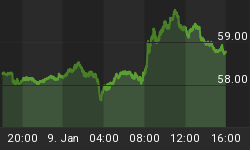
Although I have been trading in very short timeframes as of late, I like to keep an eye on the bigger picture as a sort of ballast to my approach in the markets. Lately, there has been a tremendous amount of debate and discussion on the collapse of bellwether commodities, such as copper, and what it means downstream for the economy and the stock market. You may hear the old market axiom, "Every bull market has a copper top", used by various pundits in the financial media. And while there have been enough occasions for that dynamic to ring true - a broader perspective towards the long term commodity cycle should be introduced in the discussion for greater context.
I believe we are now on the backside of one of, if not the greatest - commodity super cycles the world economy has had to absorb. The ramifications of this towards the global economy will be far reaching - from the lower input costs in manufacturing and shipping, to the considerable benefits of cheaper energy to the average consumer. I spoke tangentially to these points in my note, the Usual Suspects in August.
- Our economy through tremendous gains in productivity (and accounting) has transitioned to profitability at such a historically high petroleum and commodity cost multiplier, that by dialing energy and commodity prices lower here through the relative tightening (no additional QE) of monetary policy could in fact provide the most comprehensive stimulus to the economy and the consumer - just when the Fed was perceived to have no additional rounds left in the chamber. To think that even five years ago before the financial crisis hit, that the US economy would be able to maintain the degree of profitability it has exhibited today (with over 9% unemployment, a 12% output gap and until last week - $100 oil) would have been perceived as pure academic fiction. No economist in their right mind would have believed that these economic conditions could have produce such results. -
Certainly, it will not come without the perceived negative effects to those emerging economies that have up until this year, led the global markets and have benefited disproportionately from the booming commodity trade. However, that has historically always been the case with emerging markets. Those that have managed the profit windfalls responsibly, and have found a foothold on the global stage - will transition to a more developed economy.
But for the sake of argument and clarity, I created the chart below from a historic chart of the DJIA and the excellent long term commodity chart created by Hackett Financial. I estimated the retracement move since the chart was created based on the CRB index. I did not scale the components to each other for the basic reason that its utility is to simply convey what directional relationships between the two asset classes develop after the commodity cycle peaks.
As evident in the last two occasions where the commodity cycle has peaked, the stock market has initially followed commodities lower for only a spell - before breaking out of the long term trading range it was confined to. This makes rational sense, in that investment capital that was riding the commodity boom will eventually make its way over to the market that had been underperforming on a relative basis.
* This last chart was created in mid June - Long Term Scale
Link to Part I: Perspective on Commodities - Part I


















